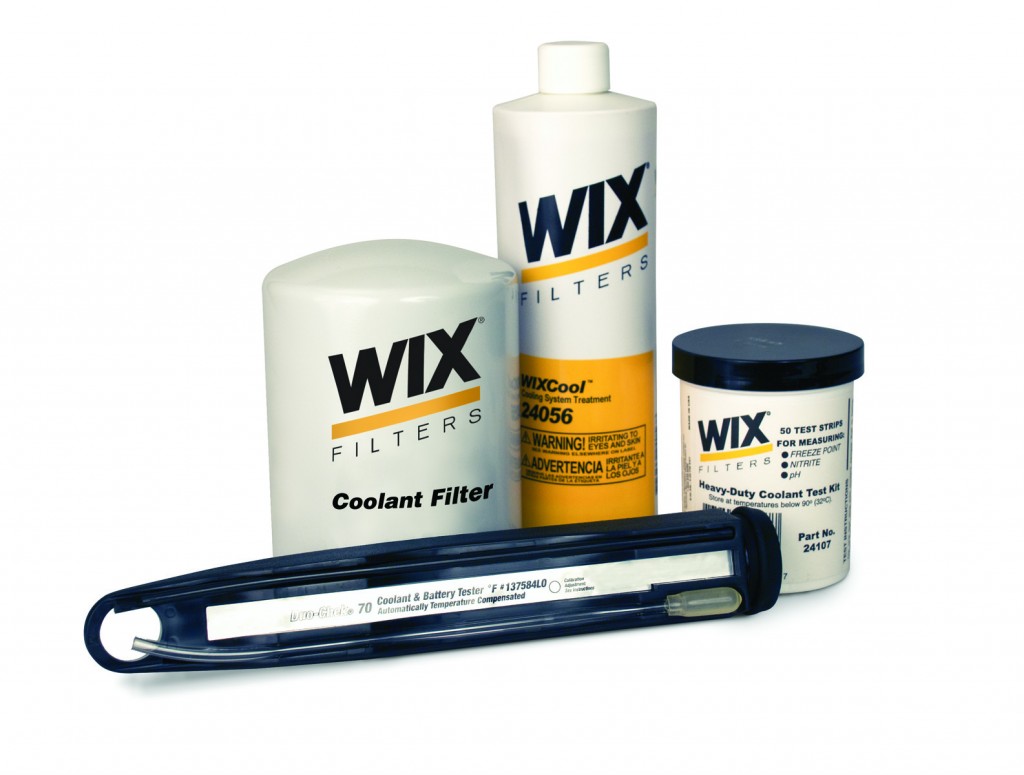The coolant system is responsible for removing approximately 30% of the combustion heat of heavy duty engines, while more than 53% percent of premature engine failures are due to improper maintenance.
Proper understanding of coolant types and adherence to vehicle manufacturers’ requirements are essential to ensure that antifreeze effectively maintains engine temperature and helps protect the cooling system from rust and corrosion.
More: Tips for Proper Conveyor Installation and Maintenance
WIX Filters, a global manufacturer of filtration products, offers the following coolant maintenance tips:

- Start clean and keep it clean. Make sure the entire system is clean – inside and out. Replace corroded and damaged components and use the appropriate flush. Balanced coolant prevents – but does not fix – problems.
- Use deionized or distilled water. Never use sodium “softened” water.
- Use quality EG or PG. It is important to know the chemistry of your coolant; pay attention to whether you are using traditional IAT coolant or organic acid technology.
- Select the proper supplemental coolant additives. If you are using IAT, there are 3 ways to protect traditional coolant with supplemental coolant additives:
- Standard service intervals
- Slow release
- Extended service interval
- Ensure proper balance. In order to effectively maintain engine temperature, coolant must be correctly diluted – usually in a 50/50 mixture with acceptable water.
- Practice proper top-off. Do not overdo your coolant by topping it off with water or coolant. You must use the correct 50/50 mixture.
- Diagnose after use. The coolant filter catches dirt, debris, chemical precipitation and other contaminates – all things you can see. Review the filter closely after removal to determine whether debris or other contaminates are penetrating the filter and entering the coolant system.
- Replace coolant when it’s time. Adhere to your vehicle’s change intervals. Also refer to the vehicle manufacturer’s (and the coolant manufacturer’s) recommendations. Coolant manufacturer’s recommendations should be followed especially if you have replaced the original coolant, or used something other than the original equipment manufacturer’s default. In that case, replace your coolant when recommended by the coolant manufacturer.
- Test, inspect and detect. Coolant should be tested regularly to check its freeze protection capabilities. Use coolant test strips or refractometers to determine the concentration ratio of coolant to water.
- Practice proper handling and storage. Handle and store your coolant in a clean, temperature-controlled environment.
More: Coolant Holes for Coolant-Through Spindle Applications
About WIX Filters


More: Coupling Maintenance
Need help with your coolant maintenance?
Contact Mike Muenks, the Business Group Director of General Industrial at IBT Industrial Solutions, at (913) 261-2107 or mmuenks@ibtinc.com.





